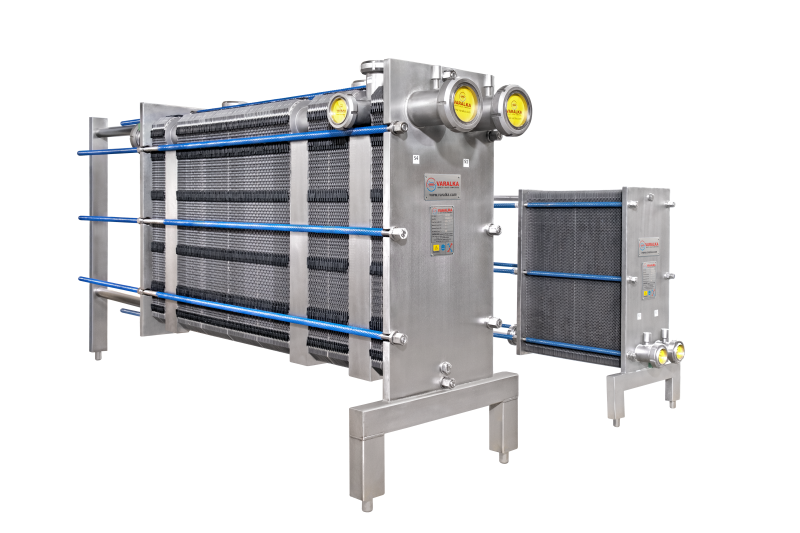Stainless steel plate heat exchangers play a crucial role in the food and beverage industry, where hygiene, efficiency, and reliability are utmost important. These heat exchangers ensure optimal thermal energy transfer while maintaining the high standards of cleanliness and durability. Today, we’ll explore the benefits of using stainless steel plate heat exchangers and their applications in food and beverage processing.
Why Stainless Steel is Ideal for Plate Heat Exchangers
Stainless steel is the preferred material for plate heat exchangers in the food and beverage industry due to its exceptional properties:
Corrosion Resistance: Stainless steel resists corrosion from acidic or high-salt environments, ensuring a long operational life.
Hygienic Surface: Its smooth, non-porous surface prevents bacterial growth, making it ideal for food-grade applications.
Thermal Conductivity: Stainless steel provides efficient heat transfer, crucial for temperature-sensitive processes.
Durability: It withstands high pressure and temperature variations, ensuring reliable performance.
Applications of Stainless Steel Plate Heat Exchangers in Food and Beverage Processing
1. Pasteurization
Pasteurization of milk, juices, and other beverages relies on precise temperature control. Stainless steel plate heat exchangers provide the thermal efficiency and hygiene required to meet regulatory standards while preserving product quality.
2. Cooling and Heating
From cooling beverages to heating syrups, stainless steel plate heat exchangers ensure consistent temperature regulation. Their design allows for rapid heat exchange, optimizing production cycles.
3. Fermentation
In processes like beer brewing or yogurt production, maintaining optimal temperatures is critical. Stainless steel plate heat exchangers enable precise temperature control, ensuring product consistency.
4. CIP (Clean-in-Place) Systems
Clean-in-place systems are essential for maintaining hygiene in food and beverage operations. Stainless steel plate heat exchangers can handle aggressive cleaning agents and high temperatures, making them ideal for CIP processes.
Importance of Regular Maintenance
To maximize the performance and lifespan of stainless steel plate heat exchangers, regular maintenance is crucial. This includes:
Cleaning: Regular cleaning prevents fouling and scaling.
Inspection: Routine checks ensure plates and gaskets are in good condition.
Monitoring Efficiency: Identifying any performance drops can help address issues promptly.
Final Thoughts
Stainless steel plate heat exchangers are indispensable in the food and beverage industry, offering unmatched hygiene, efficiency, and reliability. By investing in high-quality equipment and regular maintenance, businesses can ensure consistent production, reduced energy costs, and compliance with food safety standards.
Looking to upgrade your heat exchange systems? Contact us today to learn more about our stainless steel plate heat exchangers and customized solutions.

